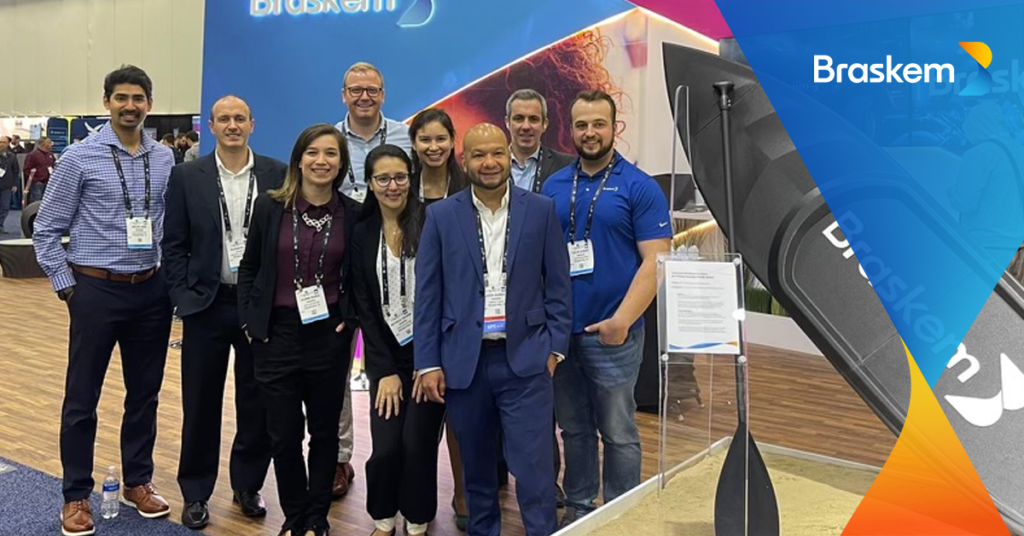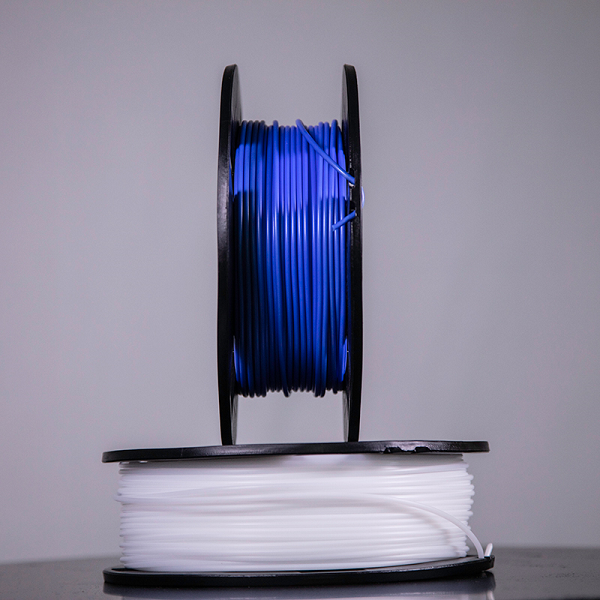During the COVID-19 outbreak, there was one important multinational that jumped into the additive manufacturing (AM) industry without the typical fanfare. This was Braskem (NYSE: BAK), the largest petrochemical company in Latin America and the largest polyolefins producer in the Americas.
To make a more official entrance into the sector, the company attended RAPID + TCT, where it displayed a broad range of polyolefin and biopolymer materials for 3D printing. 3DPrint.com caught up with Jason Vagnozzi, Braskem Global Commercial Director of Additive Manufacturing, to learn more.
At the event, the firm presented polymers for a diverse set of 3D printing processes, including fused filament fabrication (FFF), selective laser sintering (SLS), and high-speed pellet extrusion. Among them was a new line of sustainable materials. Vagnozzi walked us through the portfolio as he answered our questions.
“In 2018, we put a squad together to see what’s going on with additive manufacturing. For us, we saw a mega trend. We said, ‘The only way we’re really going to figure this out is to get involved,’” Vagnozzi said. “Fast forward two years and we launched our first line of filaments. That was April 2020. Then, in the 24 months since, we’ve launched 14 of different products, mostly filaments pellets and powders.”
Braskem’s Sustainable 3D Printing Filaments
Of particular importance were the sustainable materials. Humanity has essentially reached peak resource while pushing the ecosystem past its limits in terms of biodiversity loss and greenhouse gas emissions. For those reasons, it’s essential to immediately shift to a less resource intensive way of living. Braskem’s solution is a new line of filaments, beginning with raw sugarcane-based ethylene vinyl acetate (EVA), as well as recycled polyethylene and polypropylene (PE/PP) blended filaments with, or without, carbon fiber.
The sugarcane-based FL600EVA-BIO is an extremely flexible material with properties somewhere between a thermoplastic elastomer and a thermoplastic polyurethane (94 Shore A hardness, elongation at break > 500%). About 87 percent comes from sustainable source materials, with the remaining percentage made up of materials to make it more durable and easier to process. This material comes from Braskem’s bio-based polymer manufacturing operations in Brazil, where the company has spent more than a decade harvesting raw sugarcane for injection molding plastic. It’s pitched as being ideal for consumer, packaging, and industrial markets.
As for the recycled PE/PP, Braskem relies on suppliers of mechanically recycled plastic, which undergoes an internal audit to ensure that the materials meet the company’s quality standards. FL600R is made up of 90% recycled bottlecaps, as is its counterpart, FL605R-CF, with the addition of recycled carbon fiber reinforcement. Both are low-density plastics with the water, chemical, and impact resistance found in virgin polyethylene and polypropylene. FL605R-CF is obviously stronger and more durable than the non-reinforced variety.
The price of oil has fluctuated wildly since COVID began and, due to the lack of easily accessible fossil fuels, seems to be heading toward permanently higher oil prices. I asked if the high cost of oil played a role in Braskem’s decision to pursue more renewable materials. Vagnozzi replied:
“I would say it’s driven more by consumer preference and everything we’re seeing from an [environmental, social and governance] perspective. These themes related to global warming, sustainable plastics, single-use plastics. We identified this as a megatrend way before the increase in oil prices. This was going to be on our strategic roadmap, regardless of what happened in the short-term. If you look back in history at oil prices, you find it has always been very cyclical. It has always been a historical risk for the chemicals industry, as a whole. This move [into sustainable materials] is more about what the right thing to do is from a society perspective. To that end, Braskem is committed to a carbon-neutral circular economy where nothing is wasted, and everything is transformed. We are aiming to expand the company’s recycled content product portfolio to sales of 300,000 tons by 2025 and 1 million tons by 2030.”
Braskem’s 3D Printing Strategy
With the company’s history as a producer of PP, PE, and PVC, Braskem aims to expand the available materials in the additive market.
“In order for the market to accelerate, our clients or their downstream end users need materials that are used every day. Polypropylene and polyethylene are some of the most widely used polymers in the world, yet it was limited in 3D printing until now,” Vagnozzi said.
On display at the Braskem booth were a wide variety of these materials in various forms. This included:
Filaments
- 100 percent PE (FL300PE)
- highly printable PP filament (FL105PP)
- carbon fiber reinforced PP (FL900PP-CF)
- a glass fiber-reinforced PP (FL500PP-GF)
Pellets
- PP co-polymer (GR105PP)
- Carbon fiber reinforced PP (GR900PP-CF)
- Glass fiber reinforced PP (GR500PP-GF)
- Recycled PP/PE with carbon fiber (GR605R-CF)
Powder
- PP powder (PP 400), developed in partnership with EOS subsidiary Advanced Laser Materials (ALM)
This is just the beginning for the Brazilian giant. Being comparatively unknown to the additive manufacturing market, Braskem will continue to partner with existing companies like ALM for powders, Ultimaker for filaments, and Titan Robotics for pellets. Speaking of the SLS material, Vagnozzi said, “This was our first foray into powder. What you’re going to see from us over the next 24 months is an expanded powder portfolio. Now that we’ve cracked that basic code, we’re going to quickly accelerate, iterate, and bring in more materials.”
As it does so, Braskem may also play a role in consolidating the materials industry, Vagnozzi revealed.
“One of our views is that there are a lot of startups. The materials market is highly fragmented. It takes money to get that sort of quality assurance. If you don’t have the backing of a large corporate entity like Braskem, some of these smaller players are going to struggle to deliver the quality that Braskem is offering. One of the benefits of Braskem as a corporate entity is the financial backing that allows us to really accelerate quickly and do some innovative, creative things around biowaste.”
In other words, AM materials businesses may want to keep an open line of communication open with Braskem, as they may be interested in performing some market consolidation. Otherwise, keep an eye out for more materials from the Brazilian chemical company, as we can expect a lot more from Braskem in the near future.
Subscribe to Our Email Newsletter
Stay up-to-date on all the latest news from the 3D printing industry and receive information and offers from third party vendors.
Print Services
Upload your 3D Models and get them printed quickly and efficiently.
You May Also Like
Johns Hopkins University Researchers Develop HyFAM Technology
Two scientists from Johns Hopkins University, Nathan C. Brown and Jochen Mueller, have developed a hybrid manufacturing technology they call HyFam, or Hybrid Formative Additive Manufacturing. Their work on this technology...
3D Printing G-Code Gets an Upgrade: T-Code
Good old G-Code still manages many 3D printers, great and small. Just like the STL, it’s a standard that enables collaboration while also holding the additive manufacturing (AM) industry back....
AM Rewind: The Biggest News and Trends of 2024
After a sluggish 2023, driven by persistent inflation and geopolitical tensions, 2024 has seen some recovery. Economic growth climbed from about 2.8 percent in 2023 to a modest 3.2 percent...
Metal Wire 3D Printer OEM ValCUN Announces Plans for 2025 Expansion
ValCUN, a Belgian original equipment manufacturer (OEM) of wire-based metal additive manufacturing (AM) hardware, has announced that the company has entered the next phase of its growth trajectory, making key...





































